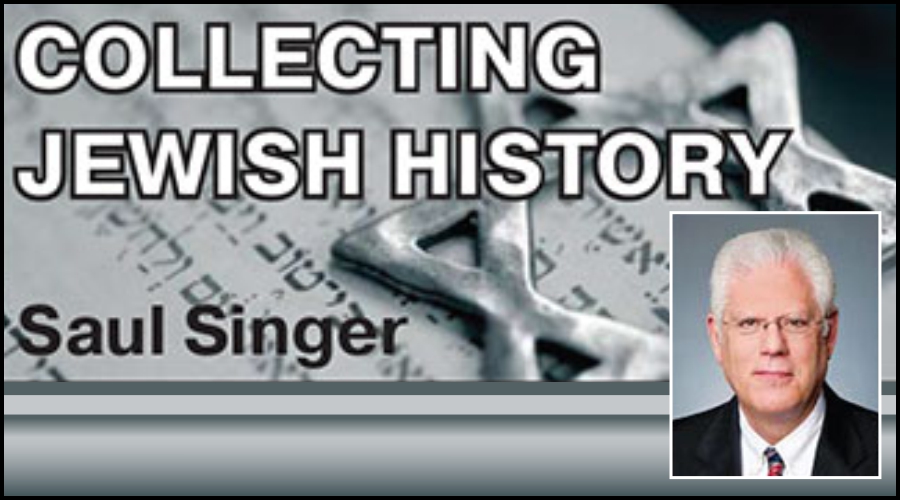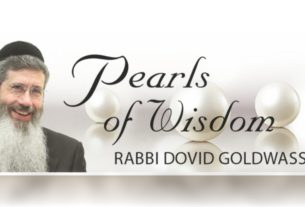Until George Gershwin, serious American orchestral composers were predominantly influenced by European schools of music. By composing original musical works based upon the rhythms, melodies, and moods of American popular music, Gershwin proved that the finer elements of jazz could be integrated into music to form the basis of symphonic creations typically and uniquely American.
He manipulated Tin Pan Alley jazz into the mainstream by merging its cadences and tonality with the contemporary popular songs of his time. One commentator perhaps best summarized the distinctiveness of Gershwin’s music this way: “He combined the musical heritage of his Eastern European Jewish antecedents with the syncopated sounds of 42nd & Broadway.”
‘);
_avp.push({ tagid: article_top_ad_tagid, alias: ‘/’, type: ‘banner’, zid: ThisAdID, pid: 16, onscroll: 0 });
The prolific Gershwin wrote 30 musical comedies for stage and films, most with the lyrics of his brother, Ira, including Lady Be Good (1924), Funny Face (1927), Strike Up the Band (1929), Girl Crazy (1930), and Of Thee I Sing (1932), for which he was awarded the Pulitzer Prize in drama, the first musical comedy to be so honored.
His orchestral works include the legendary Rhapsody in Blue (1924), Concerto in F (1925), and An American in Paris (1928); his operas include Blue Monday (1922) and the renowned Porgy and Bess (1935); and his best-known songs include Swanee (made famous by Al Jolson), Summertime (from Porgy and Bess), Fascinating Rhythm (1924), Someone to Watch Over Me (1926), Funny Face (1927), S Wonderful (1927), Embraceable You (1928), I Got Rhythm (1930), and They Can’t Take That Away from Me (1937), which earned Gershwin a posthumous Academy Award nomination for Best Original Song.
 Exhibited here is a signed program page for a concert celebrating the 10th anniversary of Rhapsody in Blue, given by Gershwin himself and by renowned tenor Lames Melton. Works by Gershwin on the program include the Concerto in F, Rhapsody in Blue, An American in Paris, and several songs, including Fascinating Rhythm, I Got Rhythm, and The Man I Love. The concert tour ran from January 14 through February 10, 1934.
Exhibited here is a signed program page for a concert celebrating the 10th anniversary of Rhapsody in Blue, given by Gershwin himself and by renowned tenor Lames Melton. Works by Gershwin on the program include the Concerto in F, Rhapsody in Blue, An American in Paris, and several songs, including Fascinating Rhythm, I Got Rhythm, and The Man I Love. The concert tour ran from January 14 through February 10, 1934.
Gershwin (1898-1937) was born Jacob Gershowitz on the Lower East Side of Manhattan. His grandfather, Yaakov Gershowitz, the son of a rabbi, had been born in Odessa and served 25 years in the Russian artillery as a mechanic for the Imperial Russian Army, which earned him the privilege – rarely bestowed upon Jews in czarist Russia – to travel freely, including leaving the Russian Pale and establishing residence in St. Petersburg.
To avoid Russian military conscription, George’s father, Moishe (later Morris) joined the major stream of Jewish immigrants at the turn of the century fleeing to the United States, where he settled in New York; married Rosa Bruskin, whom he had known in Russia; and became an American citizen in 1898.
Morris frequently changed dwellings with each new business, moving his family to some 28 different residences during their first two decades in America. The one constant seemed to be living in or near the Yiddish Theater District, where the Gershwins frequented the local Yiddish theaters and George occasionally landed a role onstage as an extra. George grew up in a Yiddish-speaking home, as his parents did not speak English until much later.
According to most authorities, the family’s Judaism was neither religious nor political but, rather, cultural and casual. The secularism of George’s parents may be attributable, at least in part, to the fact that they lived in cosmopolitan St. Petersburg as opposed to the more insular towns and shtetls of the Russian Pale. According to these authorities, Ira – George’s lyricist brother – was the only Gershwin to have a bar mitzvah ceremony, and the family virtually never attended synagogue and never observed the Jewish holidays.
However, in a 1938 interview, Rosa stated that, though she had put Orthodox Judaism behind her – “other than a devout belief in the Ten Commandments” (an interesting assertion, given the 5th commandment to “keep the Sabbath day holy”) – the family “adhered rigidly to the Jewish faith and the home was strictly Orthodox.” The children, she said, “were taught by rabbis and were all bar mitzvah.”
George’s aunt remembers Passover seders regularly hosted by Moishe and, lending credence to her recollection, famous actress Kitty Carlisle spoke of attending a Gershwin family seder where co-hosts George and Oscar Levant presided over a service “in a kind of mad jazzy rhythm,” which she characterized as “a big joke.”
Moreover, several letters exist in which George blessed G-d for various positive developments in his life, including one in which he wrote, “I pray to G-d that he will send me good blues for my concerto.” He told one romantic interest, “Thank G-d that your mother is Jewish,” and he refused to marry the great love of his life, composer Kay Swift, because she wasn’t Jewish.
He had a 10-year relationship with Kay, with whom he frequently consulted about his work (he dedicated Oh, Kay to her), and he would not wed even after she divorced her (ironically, Jewish) husband to commit to a long-term relationship with him.
 During his later years, Gershwin supported various Jewish charities and causes. Shown here is a February 14, 1934 check for $25 to the “Hadassah Jeritza Concert” written and signed by Gershwin. Maria Jeritza (1887-1982) was a celebrated Moravian soprano long associated with the Vienna State Opera and the Metropolitan Opera. She was glamorous and beautiful, and her sensational rise to fame earned her the nickname “The Moravian Thunderbolt.” For Hadassah to get her to perform at a benefit concert was a real coup.
During his later years, Gershwin supported various Jewish charities and causes. Shown here is a February 14, 1934 check for $25 to the “Hadassah Jeritza Concert” written and signed by Gershwin. Maria Jeritza (1887-1982) was a celebrated Moravian soprano long associated with the Vienna State Opera and the Metropolitan Opera. She was glamorous and beautiful, and her sensational rise to fame earned her the nickname “The Moravian Thunderbolt.” For Hadassah to get her to perform at a benefit concert was a real coup.
The basis for Gershwin’s best-known work, the folk opera Porgy & Bess, was his deep interest in both Catfish Row and the Jewish shtetl. The Gershwin family’s several residences in Harlem brought George into contact with the mushrooming black population there, and he traveled through the Gullah region of South Carolina to conduct research for Porgy, during which he developed an even stronger feeling for African-American culture.
After investing two years in the work, he was keenly disappointed that it was initially a commercial failure, though it came to be recognized as an American cultural classic and one of the most important musical developments of the 20th century. The audacious novelty of the work created great controversy, as music and theater authorities debated at length whether it was opera or a grand Broadway musical.
Gershwin told composer Lazare Saminsky, “While I actually do not know much about Jewish folksong, I think that many of my themes are Jewish in feeling.” In a 1925 interview with The American Hebrew, he declared that “the traditional Hebrew religious melodies have had a marked influence upon modern music” and that “the Hebrew chants possess a peculiarly plaintive wail which gives them a universal appeal.”

There is a particularly fascinating Jewish angle in the song It Ain’t Necessarily So from Porgy, in which Gershwin parodies religious fundamentalism through dope-peddling con man Sportin’ Life, who scolds and mocks other residents of Catfish Row in Charleston for believing various Biblical stories. Gershwin’s melody for the song’s famous refrain is the traditional tune for the first beracha by recipients of aliyot to the Torah: “Bar’chu et Hashem Ha-mevorach.” In this regard, some commentators amusingly note that while you could keep Gershwin out of shul, you couldn’t keep shul out of Gershwin.
It Ain’t Necessarily So was a particularly powerful piece, coming as it did in 1943 during the height of WWII and the Holocaust. When Porgy and Bess made its European debut in Copenhagen at the Royal Danish Opera, the Nazis – enraged by the “degenerate” work, which they said was dominated by “sub-humans” (considering that it was written by Jews about blacks) – sought, but initially failed, to shut down the production. Later in 1944, when the Nazis threatened to use the Luftwaffe to bomb the Royal Opera to rubble, the producers decided that discretion is the better part of valor and ended the performances. However, Danish radio responded by playing It Ain’t Necessarily So alongside Nazi propaganda broadcasts.
Gershwin’s early intimacy with Yiddish musical theater, generally popular with Jewish immigrants from Eastern Europe, proved efficacious when he was invited to collaborate on a Yiddish operetta with Sholom Secunda, a gifted musician infused with the Jewish tradition. In 1929, he signed a contract with the Metropolitan Opera Company to write an opera based on Szymon Ansky’s The Dybbuk, and he began to create some music for the work, even planning to travel to Europe to study Jewish music traditions there to lend further authenticity to it. The proposed musical never materialized, however, because, as it turned out, rights to the play had already been assigned to Italian composer Lodovico Rocca.
Unfortunately, the ability to assess fully Gershwin’s deliberate handling of Jewish material took a huge hit when he was forced to abandon The Dybbuk project, though we do have an insight into the nature of the material provided by his early biographer, Isaac Goldberg, who heard Gershwin play some of his proposed work. Goldberg characterized the music as “turning the room into a synagogue” with “the indistinct prayer of those to whom prayer has become a routine such as any other before coming to life as a Chassidic dance.”
In any event, the Jewish legacy of Gershwin’s music can still be seen through much of his existing work. Aside from It Ain’t Necessarily So, as discussed above, there is little question that many of his motifs and melodies resemble Jewish prayer and cantorial chants. For example, according to many music historians, his famous “blue note” technique emerged from Jewish liturgical music, suggestive of the collective cry of an oppressed people, and the opening clarinet upward slide in Rhapsody in Blue has its roots in Klezmer.
One of his most famous tunes, S Wonderful, seems to have been lifted intact from Noach’s Teive (Noah’s Ark), a number in Goldfaden’s operetta Akeidas Yitzchak (The Binding of Isaac).
The “Jewishisms” in Gershwin’s music are most evident through his repeated use of expressive traits found in Biblical cantillation, including particularly in My One & Only (from Funny Face), and musicologists have also noted a resemblance between Gershwin’s music and snappy frailachs (Jewish folk-dance tunes).
* * * * *
In the May 15, 1936 signed correspondence on his personal letterhead exhibited here, Gershwin, who often reviewed manuscripts of proposed works by other musicians, refers a work with evident Jewish content to a Jewish organization:
Please pardon the delay in returning your manuscript to you. I found it interesting and timely but it is not the type of material which I feel qualified to handle. Your best opportunity, in my opinion, would lie with some Jewish organization. Why don’t you contact the Jewish Club, 23 West 73rd Street? They are very active and I feel sure would be able to give you some valuable suggestions.
Founded in 1931 by a group of Jewish musicians and scholars, the Jewish Club, formerly called the “America-Palestine Institute of Musical Sciences,” or MAILAMM (the English acronym for the Hebrew name Machon Aretz Israel L’Mada-ei Ha-Musika), sought to explore and promote the musical culture of Eretz Yisrael and encourage musical creativity through concert programs, academic seminars, and educational programs.
MAILAMM worked closely with the Hebrew University in Jerusalem to create a music research department there and build an important music library to facilitate forging musical links between Eretz Yisrael and the Diaspora. Besides Gershwin, initial MAILAMM members included Jewish composers Arnold Schoenberg, Ernest Block, and Rubin Goldmark, and Jewish violinist Mischa Elman.
After Gershwin’s tragic death from a brain tumor, two simultaneous bi-coastal Jewish funeral services were held for him, one at Temple Emanuel in New York City, officiated by Rabbi Nathan Perilman, and one at Temple B’nai Brith (now known as the Wilshire Boulevard Temple) in Los Angeles, officiated by Rabbi Edgar Magnin. To raise funds for a Gershwin Memorial Concert hall in Jerusalem, MAILAMM gave a concert at the Metropolitan Opera House in New York on January 18, 1938.
In 1916, Gershwin recorded a piano roll medley including Dos Pintele Yid, a popular Yiddish song. Although he was not religiously observant, it was that very “little spark of Jewishness” that lived within him and occasionally manifested itself throughout his life and work.
‘);
_avp.push({ tagid: article_top_ad_tagid, alias: ‘/’, type: ‘banner’, zid: ThisAdID, pid: 16, onscroll: 25 });




